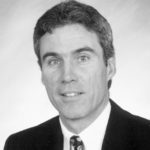From the Editor – RUSS EBBETS
A Question of Balance
I am willing to bet if you took a survey most Americans would agree with the statement that “everything we do, we do the best.” Cars, planes, lifestyle, hands down we lead the pack. Right or wrong, the sentiment that “we are the best” is something core to the American way of life, something deeply embedded in our DNA. USA, USA, USA!
I’m also sure a similar sentiment would describe an evaluation of America’s sports prowess. My surveyers would no doubt point to football, baseball and basketball as glaring examples. Forget the facts that all three sports are American inventions or that barely 50 years ago there was little world-wide participation or understanding of those sports. Those are just trivial details.
As the survey list progressed to the Olympic sports the sentiment of excellence would not change, certainly not with track & field. The U.S. has consistently been the world’s dominant player in track & field for the last century. If pressed my survey volunteers might be able to rattle off three or four iconic names like Jesse Owens, Carl Lewis, FloJo or JJK but past that I’m sure there would be some shoulder shrugs, upturned hands and a request for “a little help here.”
When our survey got to coaching greats past Knute Rockne, Vince Lombardi, Red Auerbach or that lady from Tennessee (Pat Summit) answers would morph back to the shoulder shrug and upturned hands. The general public would be hard pressed to name even one great track coach.
But what makes a great coach? One simple answer is a great athlete. You see it all the time. Lightening strikes and suddenly there is a league, county, state or national champion when said coach’s skill set might be limited to feeding, watering and pointing in the right direction. Or a favorable aid package.
Our own American conceit has served us well. Heck, ask any sports psychologist and they’ll tell you self-belief is half the battle, even 95% if you believe Yogi Berra. But for all those positives this line of thought entails it also disguises a greater blindness or inability to see the forest for the trees. Whether this is due to denial or ignorance we don’t like to go there. Any suggestion that one’s greatest strength could be one’s greatest weakness is blasphemous.
But really, isn’t introspection what good coaching should be about? Trial and error, learn from one’s mistakes, change, adapt and thrive? For some, maybe yes; for others, maybe no. Some feel that if one can make the athlete bigger, faster or stronger you can solve the Riddle of the Sphynx. This thought only gets fuel from charting the evolution, over the last 30 years, of a football players’ size and skill sets to create a compelling argument. To a degree, I am forced to agree. But were I to mention there is a price to be paid? The lifelong injuries and other long-term consequences of football are conveniently pushed aside.
Track & field is a technique dominant sport. The better able one is to execute biomechanically sound movement patterns the better the result. Pick any event and one’s success rests on the ability to balance the development of the five biomotor skills. Get too strong and you can lose speed and flexibility. Get too flexible and you dampen the stretch reflex. Bulk up and that mass can be more difficult to move higher, faster and farther. Test the outer limits of speed actions and coordination begins to unravel to the detriment of soft tissue and joints. There is a price to be paid for achievement. The elusive quest for perfection/excellence also has its consequences in our sport.
Twenty years ago, I attended a strength seminar in Toronto. One of the presenters was an Australian strength coach named Ian King. He spoke on shoulder injuries and weight training. One of the points he made was that poor shoulder postures combined with heavy duty lifting programs create shoulders that have a five-year lifespan before there is a major injury. What is a major injury? For an athlete—anything that precludes participation. And as anyone who has had a shoulder injury knows the return to participation can take a loooong time.
Balance is an invisible quality and is the most important biomotor skill. Doubt it? The simple fact is one cannot do anything, including applying force to run, jump or throw, without one’s balance. Yet regardless, many training programs blindly charge ahead always striving for a visible more, more, more.
I would also suggest one consider balance in the larger sense. What I am referring to here is an even tempered presentation in the personal life, lifestyle and athletic aspirations. Without a balanced approach the quest for bigger, faster, stronger can easily shift towards bigger, faster, wronger.
Fundamentals should be at the core of any athlete’s life and lifestyle. We could be talking about movement patterns or postures but also included would be dietary practices, values and religious or moral beliefs. Athletic participation offers the opportunity to develop or evolve in these areas that on the back end will leave the former athlete truly bigger, faster and stronger in both the literal and figurative sense.